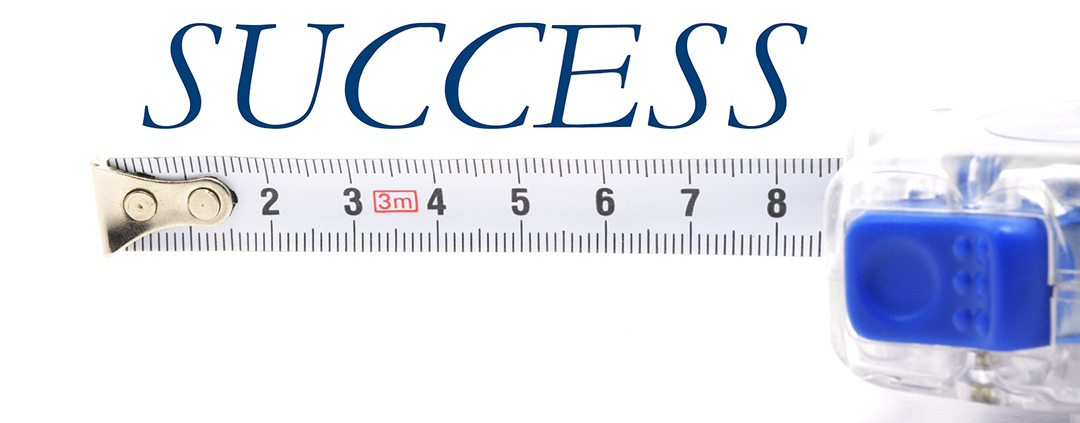The 5 Most Important E-Commerce Success Metrics
Ben Feldman (affirm.com) tells us about 5 e-commerce metrics you need to know to scale your business. Ben is a writer and Millennial who is fascinated by financial services innovations and who is dedicated to helping online retailers create positive relationships with his generation. Affirm is a financial technology company based in San Francisco, California that offers financial loans with instant decision. Image courtesy of viviamo via Bigstockphoto.
Why Read this Article
If you are running an e-commerce company, you know how fast things move. It’s too easy to get distracted by short-term tasks and lose sight of the big picture. That’s why tracking a few key success metrics is so important. This article describes 5 of the top success metrics you need to track and explains how you can use these to grow your business.
Introduction
You can spend every waking moment of your day working on various parts of your e-commerce business and still not achieve your desired results. This is why it’s imperative to identify those key success metrics that will best move the needle for your business and focus your efforts on optimizing them.
In this article, we’ll explore the 5 most important success metrics for e-commerce businesses, and provide tips on what levers to pull to optimize each metric.
1. Conversion Rate
Definition: The percentage of your site’s visitors who make a purchase.
How to calculate it: Your total number of site visitors who make a purchase divided by the total number of site visitors.
Why it matters: A good conversion rate makes all your other metrics look better.
How to improve it:
- An average conversion rate across industries is about 3%. To improve your own conversion rate, make it easier for customers to find what they’re looking for on your site.
- Make your products look more appealing. Use emotionally compelling text and visually pleasing images.
- Along the same lines, use sleek videos on your site. A recent study showed that 80% of Millennials find videos helpful when researching a purchase online.
- Make the checkout process faster by removing any unnecessary steps and streamlining everything.
- Offer alternative financing options, like Affirm, which has been shown to improve conversion rates by allowing customers to pay for their purchases over time.
- Reduce friction wherever possible. Give your shoppers the necessary information to make an informed purchase decision, but avoid giving (or asking for) too much information, which can distract the shopper from ultimately transacting.
- If you have a high abandoned cart rate, try doing user testing to get feedback from potential customers about why they left your site. Also, test abandoned cart emails (perhaps coupled with a promotion) to get shoppers back.
2. Average Order Value (AOV)
Definition: The average amount a customer spends when they place an order on your site.
How to calculate it: The sum of the value of all orders divided by the number of orders.
Why it matters: A higher AOV means that, on average you are making more profit per customer.
How to improve it:
- Examine your customers’ shopping behavior and find ways to put more relevant products and/or offers in front of them. One of the most straightforward ways to do this is by showing “related items” to your customers during the checkout process. These items can be based upon their browsing/buying history. For example, if a customer views a handbag, but ultimately selects a belt to put in their cart, consider asking if they’d like to put the handbag in their cart as well.
- Provide financing options like Affirm to customers. They can add more items to their carts with the flexibility to pay over time, instead of immediately during checkout.
3. Repeat Customer Rate (RCR)
Definition: The percentage of customers who return to make a second purchase on your site.
How to calculate it: Total new customers in a given cohort (e.g. May 2015) divided by the number who return and make a second purchase within a specified time period (e.g. 30 days).
Why it matters: Repeat customers are the lifeblood of most successful businesses.
How to improve it:
- Provide great customer service — if someone is happy with their first purchase, they’ll be more likely to return to buy again.
- Use email lists and newsletters to send relevant and timely content and offers to each customer, with links back to your site. Make these emails relevant via personalization. For example, if the customer bought a pair of slacks, send them a discount on suits, dress shoes, and dress shirts.
- Evaluate the use of a loyalty program. While this can be effective in driving repeat purchase, rewards can also be a very costly marketing expense.
4. Website Traffic
Definition: All visitors to your site.
How to calculate it: Add up all visitors to your site from every source (including referral, organic, direct, social, and email).
Why it matters: The amount of traffic to your site will usually determine how many new customers you receive and how many sales you make.
How to improve it:
- Invest as much as you can in non-paid sources of traffic, such as organic search results, organic social media traffic, PR, content marketing, word of mouth, and emails to existing customers.
- If you are prepared to spend money on paid campaigns, you can ramp up your paid marketing efforts by purchasing display ads, search ads, print ads, and other types of ads that target your potential customers.
5. Customer Lifetime Value (CLTV)
Definition: The value of an average customer during their entire relationship with your company.
How to calculate it: Project the profit (revenue less marginal costs) you expect to receive from a customer over the course of your entire relationship, and then take the net present value of those projected cash flows. (Click here for information on how to perform a net present value calculation.)
Why it matters: This metric is at the very heart of your business; it helps you know how much each customer is worth to your business, and where and how much to invest to increase profits. It’s important that your upfront customer acquisition expenses do not exceed your CLTV, as this would make you unprofitable.
How to improve it:
- Look for ways to increase Average Order Value (AOV). When a customer is ready to buy, suggest “related items” that they might want to add to their cart.
- Also, offer discounts when a customer buys several of the same type of item.
- Encourage the customer to return and repeat purchase on your site more often. This can be through retention marketing, providing promotions, or loyalty programs.
- Remember that the cost of acquiring a customer should never be greater than the profit you make from that customer (i.e. if it takes you $250 to acquire a customer and your expected CLTV is $150, then you need to immediately reevaluate your strategy).
- Find ways to reduce your customer acquisition costs to improve your overall profit per shopper. Maximize any and all free opportunities to market to your customers – search engine optimization, organic social, emails, word of mouth, PR, newsletters, content marketing – before resorting to paid media. And when you do delve into paid acquisition channels, rigorously evaluate each paid campaign to determine if they are incrementally adding to sales. If they aren’t, cut those campaigns and reallocate your marketing dollars towards those tactics that maximize lift in conversion, AOV, and repeat purchase. Have a keen eye on what series of marketing touchpoints constitutes the shortest path to conversion.


